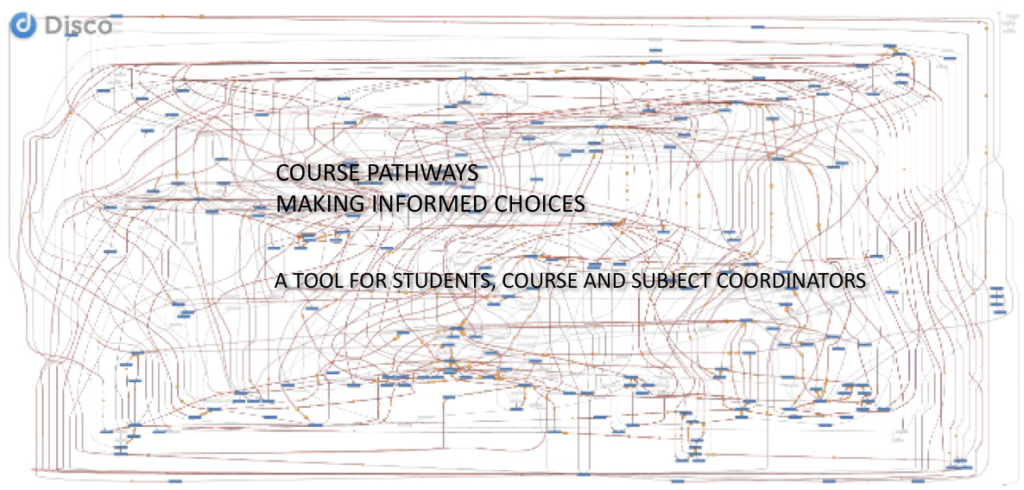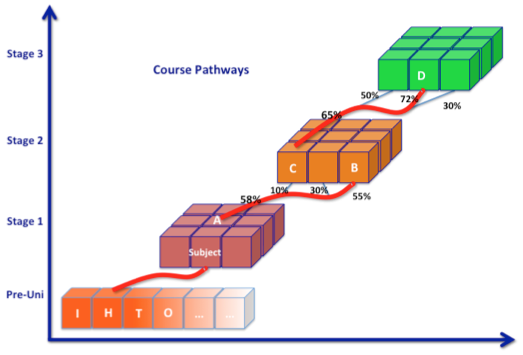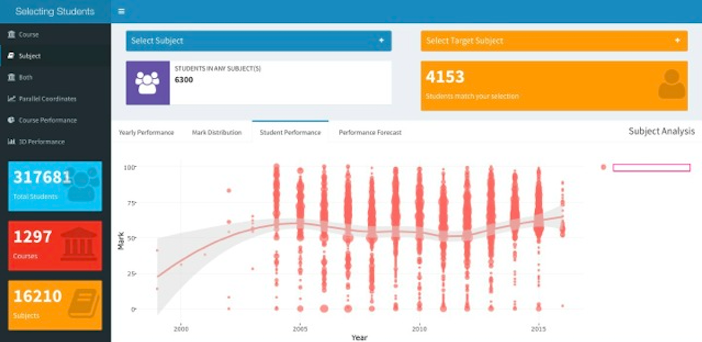Teaching & Learning Grant, 2016: PI: Jurgen Schulte (Lecturer: School of Mathematical and Physical Sciences), with: Roberto Martinez-Maldonado (Research Fellow: Connected Intelligence Centre); Simon Buckingham Shum (Professor: Connected Intelligence Centre); Pedro Fernandez de Mendonca (Student, Master of Data Science & Innovation)
 This project aims to uncover statistically significant and meaningful patterns in students’ course pathway choices and to derive individual student course-longitudinal performance indicators.
This project aims to uncover statistically significant and meaningful patterns in students’ course pathway choices and to derive individual student course-longitudinal performance indicators.
The objective is to provide support units, course and subject coordinators with longitudinal indicators that may be used to facilitate student personal-support actions (for example, on-demand or just-in-time individualised student support).
The indicators may also help to support the streamlining of course and subject content. The more students can be informed about what it would take for them (individually) to master future subjects and stages in their course, the better their study experience will be and a higher overall student retention rate may be achieved.
 We applied various data mining techniques and data modelling tools such R in RStudio and KNIME. For the uncovering of pathway processes, we also employed process mining tools such as ProM and Disco.
We applied various data mining techniques and data modelling tools such R in RStudio and KNIME. For the uncovering of pathway processes, we also employed process mining tools such as ProM and Disco.
We have been fortunate to being able work with a very rich student progression dataset provided by the UTS Data Warehouse and Business Intelligence division. The dataset allowed us to mine historical data of 1,300 UTS degree courses and some 16,000 subjects (course units) taken by some 310,000 students in over 6 million enrolments. This makes it the largest educational progression pathway study undertaken so far.
 The proof-of-principle data mining pilot was completed in November 2016. The successful implementation of a tool to provide course planners and coordinators with a longitudinal and lateral view of student cohort, course and course units performance, and projected cohort future performance was presented at the 2016 UTS Teaching and Learning Forum (slides below).
The proof-of-principle data mining pilot was completed in November 2016. The successful implementation of a tool to provide course planners and coordinators with a longitudinal and lateral view of student cohort, course and course units performance, and projected cohort future performance was presented at the 2016 UTS Teaching and Learning Forum (slides below).
The project is now preparing for its second phase which will focus making the tool accessible to users with appropriate level access, intuitive visualization of progression choices and levels of success, and establishing meaningful pathway indicators for use by university support units.